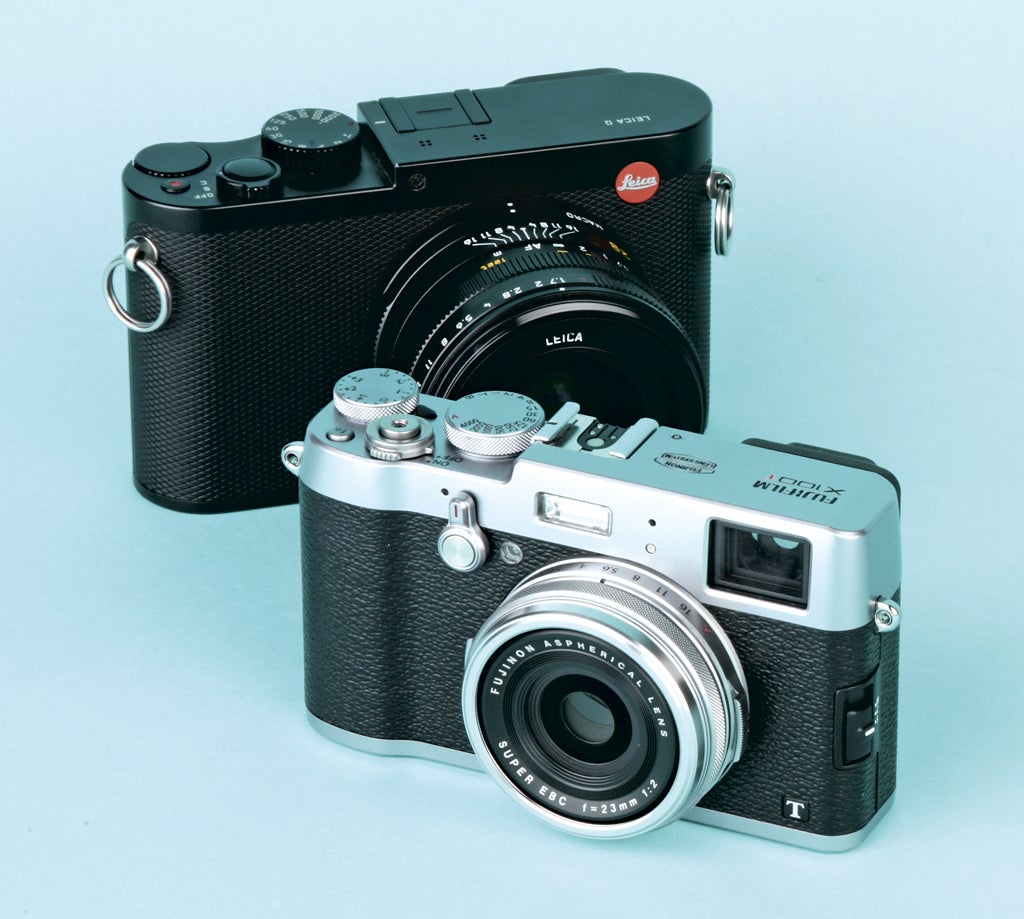Is the full-frame Leica Q (Typ 116) really worth its £2,900 premium price compared to the £840 Fujifilm X100T? Andy Westlake finds out

It is five years since Fujifilm announced its original FinePix X100 – a retro-styled compact camera with an APS-C sensor, fixed 35mm-equivalent f/2 prime lens, analogue control dials and a unique hybrid optical/electronic viewfinder. Despite all manner of operational quirks, its stunning image quality and sheer charisma meant that it instantly became a cult classic. The current third-generation model, the X100T, uses the same formula, but now with a highly refined design that makes it as pleasant to shoot with as it is to look at.
Given the success of the X100T, it’s perhaps surprising that no other manufacturer has really made a direct competitor. Nikon, Ricoh and Sigma have all built cameras with APS-C sensors and fixed prime lenses, but none of these has the built-in viewfinders or intuitive handling of the X100 series. However, earlier this year Leica came up with the closest yet, in the shape of its Q (Typ 116) compact. This sports a larger full-frame sensor, a 28mm f/1.7 lens, traditional control dial operation and the best electronic viewfinder we’ve yet seen in any camera. But this comes at a price – at £2,900, the Leica Q costs almost four times as much as the £840 Fujifilm X100T.
Here in the AP office, we love both cameras. Ever since we tested the Leica Q, though, we’ve been curious to see how it would measure up in a direct head-to-head comparison with the X100T. In principle, the Q’s 24-million-pixel full-frame sensor should give noticeably better image quality than the X100T’s 16.3-million-pixel APS-C sensor, both in terms of resolution and low-light performance. Equally, I’d expect the Q’s 28mm f/1.7 Summilux lens to perform a bit better than the X100T’s 23mm f/2, which makes some compromises to keep the camera’s size down. The question is, though, how far do we have to push the cameras to see these advantages?
Why choose a fixed-lens compact?
Before we go any further, let’s take a step back and consider why you might want such a camera in the first place. At first sight, restricting yourself to a single focal length might seem unnecessarily limiting compared to using a compact camera with a zoom lens. Indeed, with cameras like the Sony Cyber-shot DSC-RX100 series and Canon PowerShot G7 X combining fast zoom lenses with relatively large 1in sensors in a genuinely pocketable body, you could be forgiven for asking whether these cameras have rendered fixed-lens compacts obsolete.
The counter-argument is that cameras like the Fujifilm X100T and Leica Q encourage a different kind of creativity. The fixed lens means you may have to work a bit harder for your compositions, but its large maximum aperture allows creative use of shallow depth of field. The analogue control dials positively encourage you to experiment with your exposure settings, and a high-quality electronic viewfinder gives you the best possible preview of how your shots will work out. Almost as importantly, these cameras are wonderfully tactile objects that beg to be picked up and used.
Other options
In this article, we’ve chosen to look at the Leica Q (Typ 116) and Fujifilm X100T because they both have prime lenses, traditional controls and built-in viewfinders. But there are other cameras you might consider instead. The Nikon Coolpix A and Ricoh GR II both have fixed 28mm (equivalent) lenses and 16-million-pixel APS-C sensors in smaller, easier-to-carry bodies, but neither has a built-in viewfinder. The Sigma dp Quattro range gives exceptional image quality from top-quality 21mm, 28mm, 40mm and 75mm (equivalent) lenses and Foveon sensors, but the eccentric form factor and poor high ISO performance mean that these cameras are something of a niche interest.
Perhaps the closest competitor to the cameras tested here is the Panasonic Lumix DMC-LX100, which has traditional controls and an electronic viewfinder, but with a fast 24-75mm (equivalent) f/1.7-2.8 zoom lens in front of a Four Thirds sensor with an effective resolution of 12.8 million pixels. It’s a great option if you can’t live without a zoom.




